Shrivenham February 2007
Shrivenham is a rarely
visited location, so the visit here was pretty popular with the membership.
The Defence College
here is home to a large variety of establishments, but the Aviation Department
was the place that attracted our interest and attention.
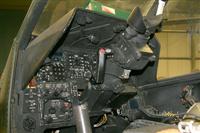 The Aviation course is
aimed at high ranking Army and naval officers, to give them an insight into what
air power can be used for, how to effectively employ it in their operations, and
also what type of limitations there are. Army staff being promoted to the rank
of Major have to attend the 9 month long course, which should benefit both
themselves as well as their new units.
The Aviation course is
aimed at high ranking Army and naval officers, to give them an insight into what
air power can be used for, how to effectively employ it in their operations, and
also what type of limitations there are. Army staff being promoted to the rank
of Major have to attend the 9 month long course, which should benefit both
themselves as well as their new units.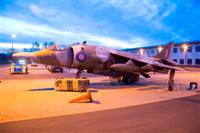
Our visit started off
by checking in at the main reception, before driving off to the Aviation Hall.
Displayed outside here is a Harrier GR3, serialled XV744. This particular
aircraft held the trans-Atlantic world speed record and is shortly due to depart
for some renovation work before returning and moving inside the Aviation Hall.
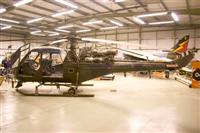 Next, we moved inside
the Aviation Hall, where our host provided a very interesting and informative
presentation about the Aviation Course, and about air power as well. We were
then free to discover the exhibits here at our leisure. Army Air Corps Scout AH1
XT621 is kept here. Its an example of an early generation armed helicopter, and
is retained so that the students can see how helicopter flying controls actually
operate the rotor blades. The "exposed" nature of a Scout rotor head
makes it much easier for the students to visualise how the controls function.
Next, we moved inside
the Aviation Hall, where our host provided a very interesting and informative
presentation about the Aviation Course, and about air power as well. We were
then free to discover the exhibits here at our leisure. Army Air Corps Scout AH1
XT621 is kept here. Its an example of an early generation armed helicopter, and
is retained so that the students can see how helicopter flying controls actually
operate the rotor blades. The "exposed" nature of a Scout rotor head
makes it much easier for the students to visualise how the controls function.
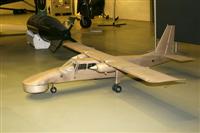
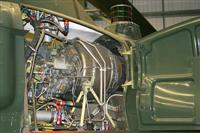
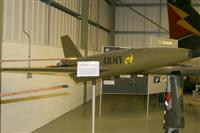
Amongst the aircraft
displayed in the hall, there are also some UAVs (becoming increasingly important
these days), as well as models, engines, airborne weapons, and systems and
components.
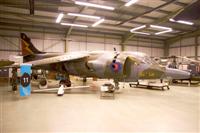
Another Harrier GR3 is
on display inside the hall. XW919 is a veteran of the 1982 Falklands War against
Argentina. Operating from the task force flagship HMS Hermes, it flew ground
attack missions against Argentine forces on the islands, before suffering small
arms damage on 12th of June whilst attacking Sapper Hill. The aircraft landed
back on Hermes despite being on fire, and the conflict ended shortly afterwards.
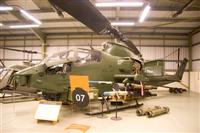 A later generation of
attack helicopters is exemplified by the USArmy Cobra 69-16445. This Bell AH-1F
model operated in USArmy service until the 1990's, this example flying into
Shrivenham shortly after completing operations in Bosnia.
A later generation of
attack helicopters is exemplified by the USArmy Cobra 69-16445. This Bell AH-1F
model operated in USArmy service until the 1990's, this example flying into
Shrivenham shortly after completing operations in Bosnia.
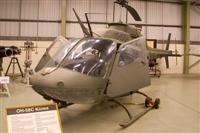
The final aircraft in
the hall is another US model. The Kiowa is based on the highly successful
civilian Bell 206 JetRanger series, and is used to show that in some cases
civilian aircraft can be modified or updated into useful military aircraft. This
particular OH-58C (70-15154) also served with the USArmy for many years in
Europe.
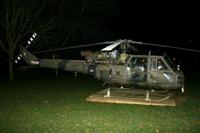 Our final aircraft of the
visit was another Scout, preserved on site. By now the sun had long since set,
so XV122 proved to be a bit of a challenge to us.
Our final aircraft of the
visit was another Scout, preserved on site. By now the sun had long since set,
so XV122 proved to be a bit of a challenge to us.
So, a superb visit to a
fascinating establishment. I must congratulate our host for allowing us to see
everything we wanted, he was very patient and understanding. Our thanks go to
him for the access we were allowed, and the insight we were given into this
interesting and important college.
 The Aviation course is
aimed at high ranking Army and naval officers, to give them an insight into what
air power can be used for, how to effectively employ it in their operations, and
also what type of limitations there are. Army staff being promoted to the rank
of Major have to attend the 9 month long course, which should benefit both
themselves as well as their new units.
The Aviation course is
aimed at high ranking Army and naval officers, to give them an insight into what
air power can be used for, how to effectively employ it in their operations, and
also what type of limitations there are. Army staff being promoted to the rank
of Major have to attend the 9 month long course, which should benefit both
themselves as well as their new units.







